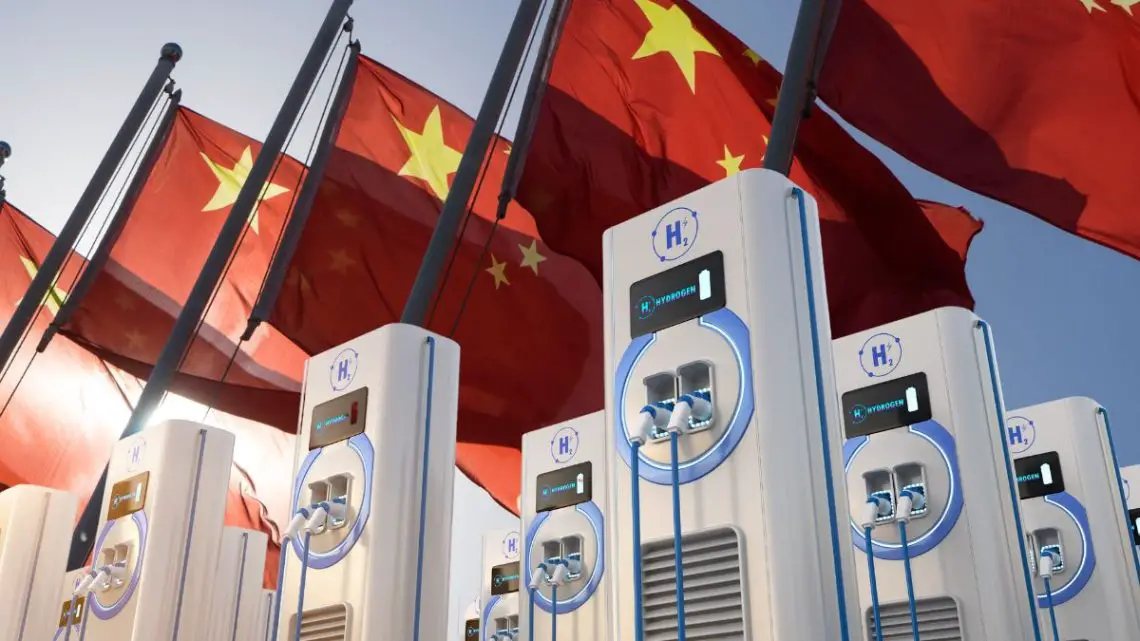
China’s H2 strategies includes building over 1,200 hydrogen fuel stations
February 14, 2024The country’s ambitious plan is to have those refueling locations in place before the end of 2025.
China has been extremely enthusiastic about the use of H2 as a part of its decarbonization strategy, and part of this effort involves the construction of a network of hydrogen fuel stations.
With more H2 cars on the road, there is a growing demand for places to refuel them.
The country is experiencing an H2 car boom and if it hopes to continue in that direction, hydrogen fuel stations will be required to keep those vehicles running. The Chinese government has developed plans and regulations that will require the rapid construction of a network of these refueling locations.
Thirty of the country’s municipal cities and provinces have issued government plans and policies with this type of target. Among them, 29 have outlined targets for 2025 regarding the construction of refueling locations. In total, this will involve building more than 1,200 places for H2 vehicles to refuel.
If China reaches its total, it will have more hydrogen fuel stations than the rest of the world combined.
Of the participating provinces and municipal cities, 5 intend to build at least 100 hydrogen fuel stations locations by next year. Guangdong tops that list with a target of 200 locations. This has required local governments in the country to alter their construction targets set within the last few years. For instance, the 2025 targets for Chongqing, Jiangsu, and Hebei have all increased their targets by at least double compared to the ones they initially set in 2019 and revised in 2021.

These moves were driven by the H2 vehicle pilot city cluster initiative launched by the Chinese central government, which it later used as a foundation for announcing the country’s future national energy system and the critical role H2 would be playing. With this came policy changes designed to bolster confidence in promoting hydrogen vehicles by local governments.
Looking ahead
 The medium- and long-term goals of these strategies to a certain degree place the spotlight on how determined and confident participating municipalities and provinces are in developing the H2 industry moving forward.
The medium- and long-term goals of these strategies to a certain degree place the spotlight on how determined and confident participating municipalities and provinces are in developing the H2 industry moving forward.
By building out a network of hydrogen fuel stations, it will be easier to expand the adoption of H2-powered vehicles and bring them into mainstream use, as there will be places for owners to refuel.
Ready to test your knowledge on the most abundant element in the universe? Take our fun and engaging Hydrogen Quiz now! [forminator_quiz id=”58712″]



 With over 15 years of reporting hydrogen news, we are your premier source for the latest updates and insights in hydrogen and renewable energy.
With over 15 years of reporting hydrogen news, we are your premier source for the latest updates and insights in hydrogen and renewable energy.
Most of the hydrogen to power these Chinese vehicles will be generated by electricity from coal fired power stations as the electrolysis produces very clean hydrogen, cleaner than 99.99% that fuel cells need, so the hydrogen will be labelled “grey” but the Chinese strategy to boost the number of hydrogen powered vehicles is good no matter the origin of the electricity, as this gets the conversion started of the huge fleets of heavy vehicles to hydrogen. Meanwhile the hydrogen production is likely to progress to cleaner and cleaner energy sources as China ramps up it production of fossil-free electricity.